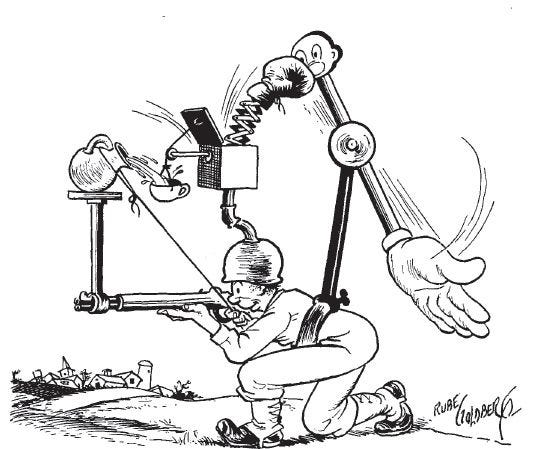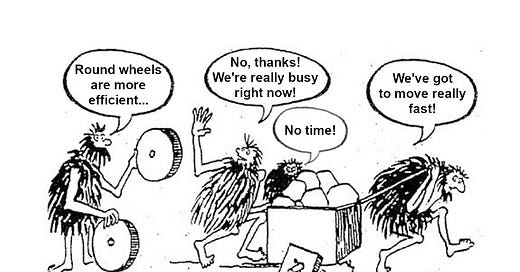Bitcoin Halving is here! How BitMex is causing fees to rise. Bitcoin Tech Talk Issue #187
Happy halving! This happens only once every 4 years or so and causes a significant supply shock to the Bitcoin economy. Amiti Uttarwar has drawn a great set of illustrations to explain what’s happening. This is an excellent way to explain what’s going on to your nocoiner/precoiner friends.
![How to Know When the Glass Is Half Full [SUNDAY COMICS] How to Know When the Glass Is Half Full [SUNDAY COMICS]](https://substackcdn.com/image/fetch/$s_!k0xy!,w_1456,c_limit,f_auto,q_auto:good,fl_progressive:steep/https%3A%2F%2Fbucketeer-e05bbc84-baa3-437e-9518-adb32be77984.s3.amazonaws.com%2Fpublic%2Fimages%2Fcaba9328-c276-4522-b237-f430fab0b785_1200x920.jpeg)
Fees suck for the user. It’s payment made to get a transaction into a block. Fees are great for miners. They get paid for including transactions and gives them incentive to make Bitcoin run. This dichotomy is at the core of what makes Bitcoin work and the answer to the oft-asked question about how miners will be incentivized once the mining subsidy gets very low and eventually runs out. Users want to minimize fees and miners want to maximize them.
In the long run, these incentives should work. Users that pay too much will slowly lose their Bitcoin. Miners that don’t take the highest fee transactions will slowly be out-competed by those that do. In the short-run, however, incentives seem to not have applied to BitMex as this report from 0xB10C claims.
The report accuses BitMex of causing higher fees for everyone. This is because BitMex does all user withdraws once a day at 1300 UTC. As the funds are in an inefficient multisig and require 3 signatures to unlock, the transactions can get fairly large and the median fees per day that they pay is 0.95BTC.

As the article points out, these are all 3-of-4 p2sh addresses that are used for inputs, which are inefficient in multiple respects. First, p2sh is strictly worse than p2wsh in terms of fees as it uses up more blockspace. Second, they’re using uncompressed pubkeys which take 32 bytes more per key for a total of 128 more bytes per input as there are 4 keys that need to be revealed. This has cascading effects as they reduce the blockspace available for everyone else, increasing fees across the board. In addition many fee estimation algorithms use the fees from the past blocks, causing fees to spike in subsequent blocks, causing more congestion.
It’s rather surprising that they haven’t upgraded such easy optimizations as compressed pubkeys, but then again, they’re sitting on billions of dollars, so there’s not as much incentive to optimize. This behavior is particularly egregious given that Bitcoin Optech has free resources to help exactly with this sort of thing. Unfortunately, this has negative externalities in that the rest of us are being forced to pay more in fees in the meantime. Let’s hope that they upgrade for the ecosystem’s sake or at least be shamed into it.
Bitcoin
Nick Emblow has published his own independent verification of the s2fx model discussed in my newsletter last week. Using his own data and doing the same regression found the same level of correlation. Using this model, he predicts a price between $83k and $1.48M for the next reward era which starts today. The s2f and s2fx models are going to get tested over the next 12 to 18 months and these predictions will either prove themselves or not. I look forward to seeing what happens.
Fabian Jahr has an interesting article outlining all the coins that have been burned in Bitcoin. The amount is around 182 BTC, most of which was from the genesis block and duplicate txid’s pre BIP-34 (which forced coinbase tx id’s to be different). This does not account for burned coins like Counterparty’s proof-of-burn, which still count toward the UTXO set.

Blockstream has released a Satellite product for downloading Bitcoin data without an internet connection! This requires an antenna to receive the satellite broadcast and a receiver kit to process the data. The amateur version is $179 for the antenna and $279 for the receiver, while a pro receiver is $749. They’ve done a lot of optimization and it will further harden the Bitcoin network once such devices become more ubiquitous.
Louis Singer has a pretty thorough technical overview of Simplicity, specifically the Haskell implementation. Be warned! The language is very much bare metal and is very mathematical. While Simplicity can theoretically be used on an Elements sidechain (like Liquid), it’s probably a bit too bare metal to practically use at the moment. Interested developers should definitely look at this article to get a good idea of what they’re in for if they want to pursue writing smart contracts using Simplicity.
Lightning
Joost Jager has published an article on how multi-path payments (MPPs) work in Lightning. MPPs are a new feature in lnd-0.10 and the implementation is fairly complex. That said, MPPs have the advantage of using all sources of inbound liquidity. The main thing I learned from this article is that multi-path payments will use more smaller channels, which tend to have lower fees, even on a per-sat basis. Multi-path payments are also a nice privacy improvement as it’s harder to guess how much is being paid to whom when there are multiple paths being used.

Economics, Engineering, Etc.
Legendary investor Paul Tudor Jones is now bullish Bitcoin. In the report, he writes about how he managed to double his money investing in Bitcoin personally in 2017, which gave him enough of a taste to revisit it the past few months. His investment thesis is that Bitcoin is the best performer of all the possible hedges against fiat inflation. He’s not buying Bitcoin directly, though. He’s getting exposure to Bitcoin through the cash-settled futures market. Which may explain why the CME is setting records on Bitcoin futures open interest volume.

Chad Bitcoin outlines various ways in which he’s made mistakes with regard to Bitcoin security. They include missing the backup seed, choosing the wrong exchange and lending out Bitcoin. The main mistake seems to be that it’s not a good idea to give up possession of your Bitcoin to anyone you do not completely trust.
Pete Harrigan has applied the s2fx model to housing. The fact that s2fx model does a decent job of predicting housing prices is itself pretty surprising. Then again, housing has been used as a store of value for the past 50 years for many, so perhaps that shouldn’t be such a surprise. The article only goes into the housing in the US market as a whole, it would be interesting to find out the s2fx model for specific cities which are expanding at different rates.

BitMex Research has an excellent article on Ethereum 2.0. From sharding to proof-of-stake to the one-way-peg, the article outlines just how complicated and delicate this whole operation is going to be not unlike the illustration above. Among other things, Eth 1.0 users can convert their Eth 1.0 tokens to Eth 2.0 for free, but not vice-versa. But there’s going to be staking available in 2.0 incentivizing people to move to Eth 2.0 to make money off of that. The article predicts that there will likely be significant delays given how complex everything is and how hard it is to analyze all of the incentives. I tend to agree. I suspect Eth 1.0 tokens and Eth 2.0 tokens will have some relationship with each other, but that they’ll reflect the relative confidence of how things are going in 2.0.
Bitmain is having some serious conflict that erupted in some physical altercations. Micree Zhan and Jihan Wu have been fighting over Bitmain for a few years now and this has culminated in the arrest of one of Jihan’s main allies, Luyao Liu. This is a sad state for a company that revolutionized the Bitcoin mining industry as they continue to lose market share to better organized rivals like MicroBT.

A research paper from the Imperial College of London came to the conclusion that most of the transactions in EOS, Tezos and XRP do not transfer value at all! According to the paper, 95% of EOS transactions, 82% of Tezos transactions and 98% of XRP transactions were essentially transaction spam, not transferring any value. Of course, all three are very centralized, so they can afford to eat some spam, but why would they do something like this? I suspect that it’s a form of marketing to make their chains seem more useful than they are by inflating transaction volumes.
Podcasts
I did a show on the s2fx model last week and also read through the Bit Gold paper. I also chatted with La Bitcoineta about the various technical topics around Bitcoin. Lastly, I did a hangout with a bunch of Austin Bitcoiners on Periscope. Lastly, I did a show with Tone when the price crashed $1500 or so on Saturday night.
My books are available to read if you’re quarantined.
Fiat delenda est.



